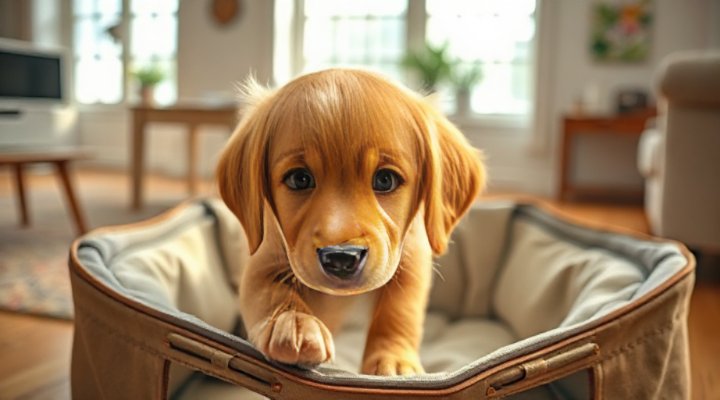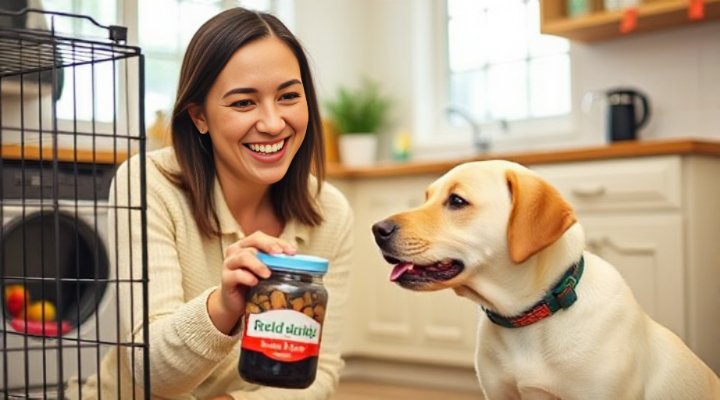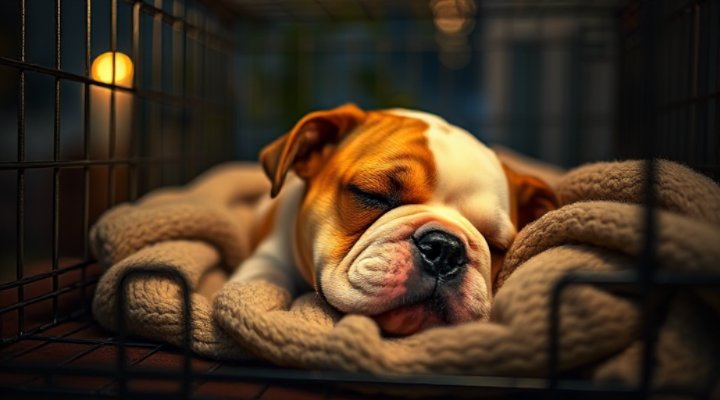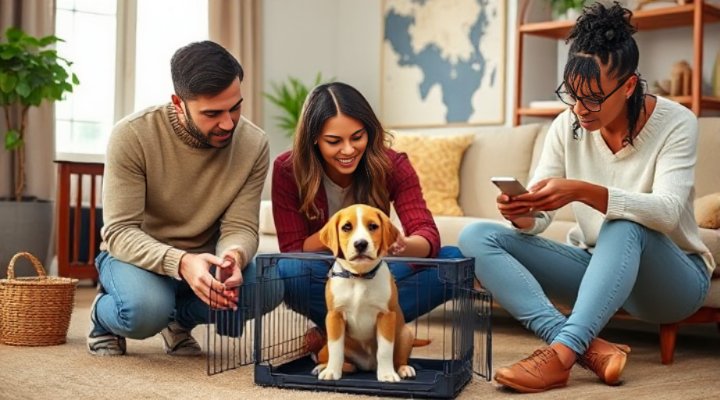Crate training is one of the most effective methods to help your puppy feel secure while developing good behavior. In this comprehensive guide, we’ll walk you through each step of the process to ensure success for both you and your furry friend.

Why Crate Training Works for Puppies
Dogs are naturally den animals, meaning they instinctively seek out small, enclosed spaces for security. A properly introduced crate becomes your puppy’s safe haven. According to the American Veterinary Society of Animal Behavior, crate training done correctly can significantly reduce anxiety in dogs.
Our article on Dog Crate Training: Scientific Methods explains the psychology behind this technique in more detail.

Choosing the Right Crate
The first step in puppy and crate training is selecting the appropriate crate. It should be:
- Large enough for your puppy to stand, turn around, and lie down comfortably
- Not so large that they can eliminate in one corner and sleep in another
- Sturdy and well-ventilated
For more guidance on crate selection, check out our Best Crate for Puppy Training article.

Step-by-Step Crate Training Process
Step 1: Introduction to the Crate
Begin by placing the crate in a common area with the door open. Allow your puppy to explore it at their own pace. Toss treats near the crate, then gradually inside it.
Step 2: Creating Positive Associations
Feed meals near the crate, then eventually inside it. Use special toys or treats that your puppy only gets when in the crate. This builds positive associations.
Step 3: Gradual Confinement
Once your puppy enters willingly, begin closing the door for short periods while you’re present. Gradually increase duration as they become comfortable.
Our Best Way to Crate Train a Puppy guide offers additional tips for this phase.

Common Crate Training Mistakes to Avoid
While crate training is highly effective, some common pitfalls can hinder progress:
- Using the crate as punishment
- Leaving puppy crated too long
- Responding to every whine or bark
- Moving too quickly through the steps
The American Kennel Club provides excellent resources on avoiding these mistakes.

Nighttime Crate Training Tips
Nighttime can be challenging for new puppies. Here are some strategies:
- Place the crate near your bed initially
- Use a warm water bottle wrapped in a towel (simulates littermates)
- Keep a consistent bedtime routine
- Take puppy out for last potty break right before bed
For more on establishing routines, see our Puppy Training Schedule article.
When to Seek Professional Help
While most puppies adapt well to crate training, some may show excessive stress. Signs to watch for include:
- Persistent drooling or panting
- Repeated attempts to escape that result in injury
- Eliminating in the crate despite being housebroken
If you notice these signs, consult our Dog Behavior Problems Solutions guide or a professional trainer.
Transitioning Out of the Crate
As your puppy matures and demonstrates good behavior, you can gradually give more freedom. This typically begins around 6-12 months, depending on the individual dog. Always supervise initially when giving more space.
Remember, the crate remains a valuable tool throughout your dog’s life for travel, recovery from illness, or simply as their personal retreat space.
Related Keywords: puppy crate training tips, how to crate train a dog, crate training schedule, best crate for puppies, house training with crate, puppy anxiety solutions, dog behavior training
